Code School Finland curriculum forms a systematic learning path from beginner to advanced level. It can be used at all levels of education, all the way from kindergarten to high school (K-12).
The curriculum consists of learning modules that include the following:
- Student book
- Teacher manual
- Assessment framework
- Hardware kits (optional)
Student books
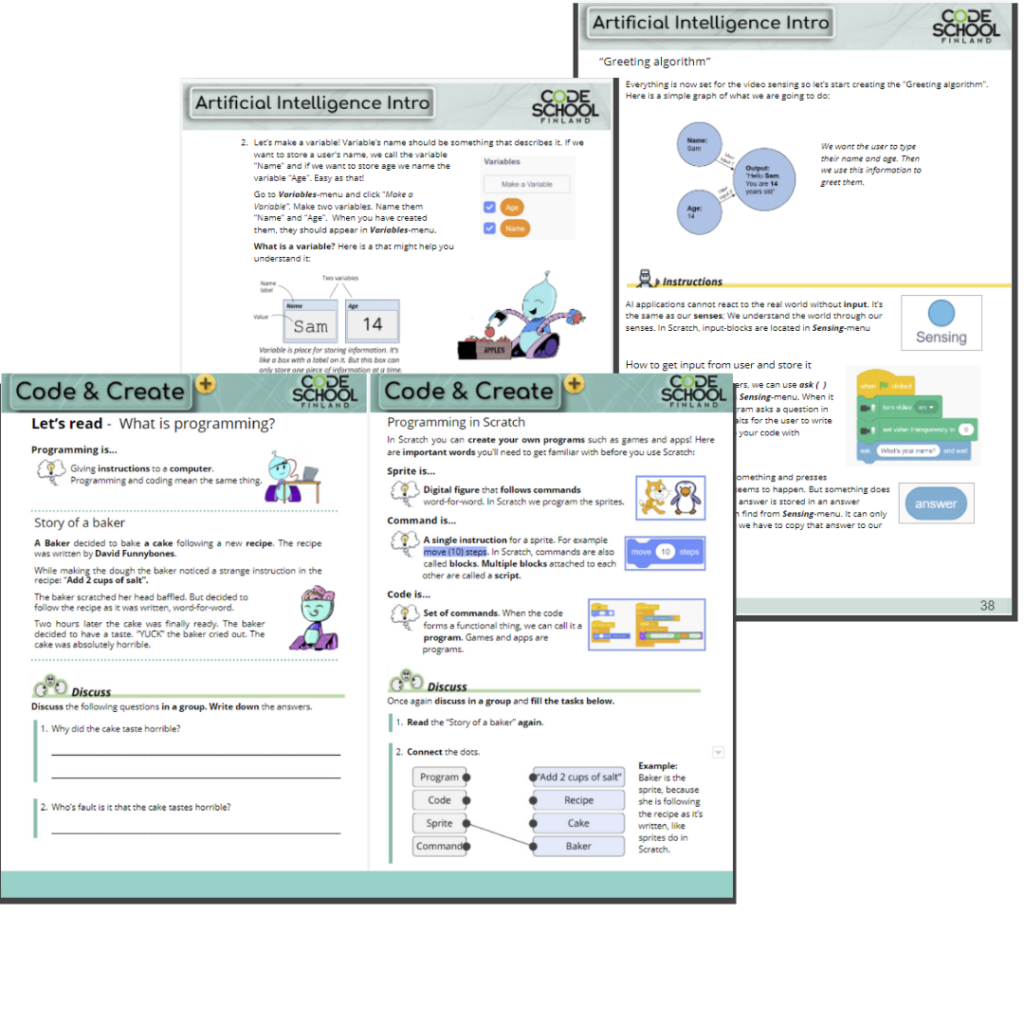
Our student books have been designed with the aim of supporting learning. The books build on diverse materials that combine informative reading with trying things out and solving challenges.
The books guide students to gradually take more responsibility for their own learning. This is achieved by supporting students to plan their learning goals beforehand and reflecting on their skills during the learning process.
The student books include support for differentiating the material for various kinds of learners (e.g. for advanced level).
Teacher manuals
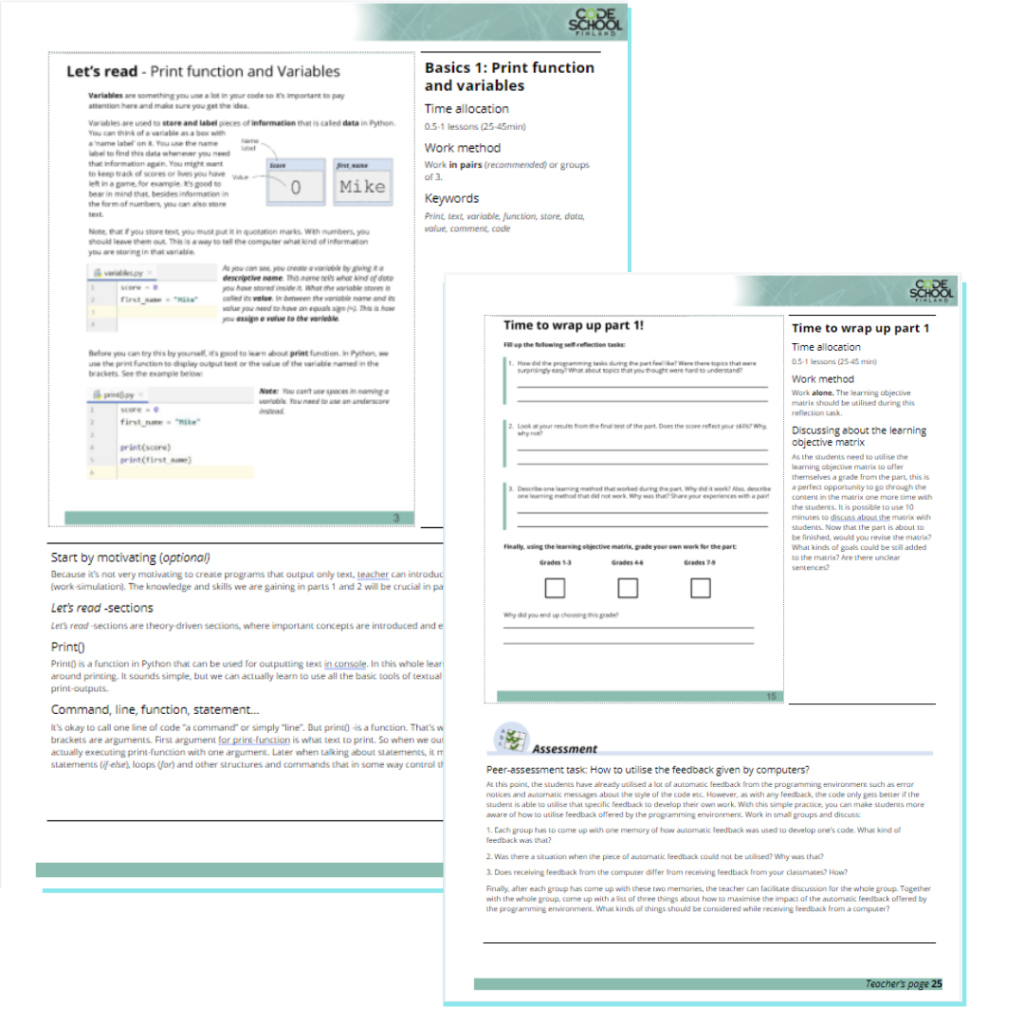
Teacher manuals guide the teachers in a concrete way to teach the content of the student books.
With advice such as time allocation, work method, sample answers and extra challenges for the advanced students, the teacher manuals minimize the class preparation time.
Assessment framework
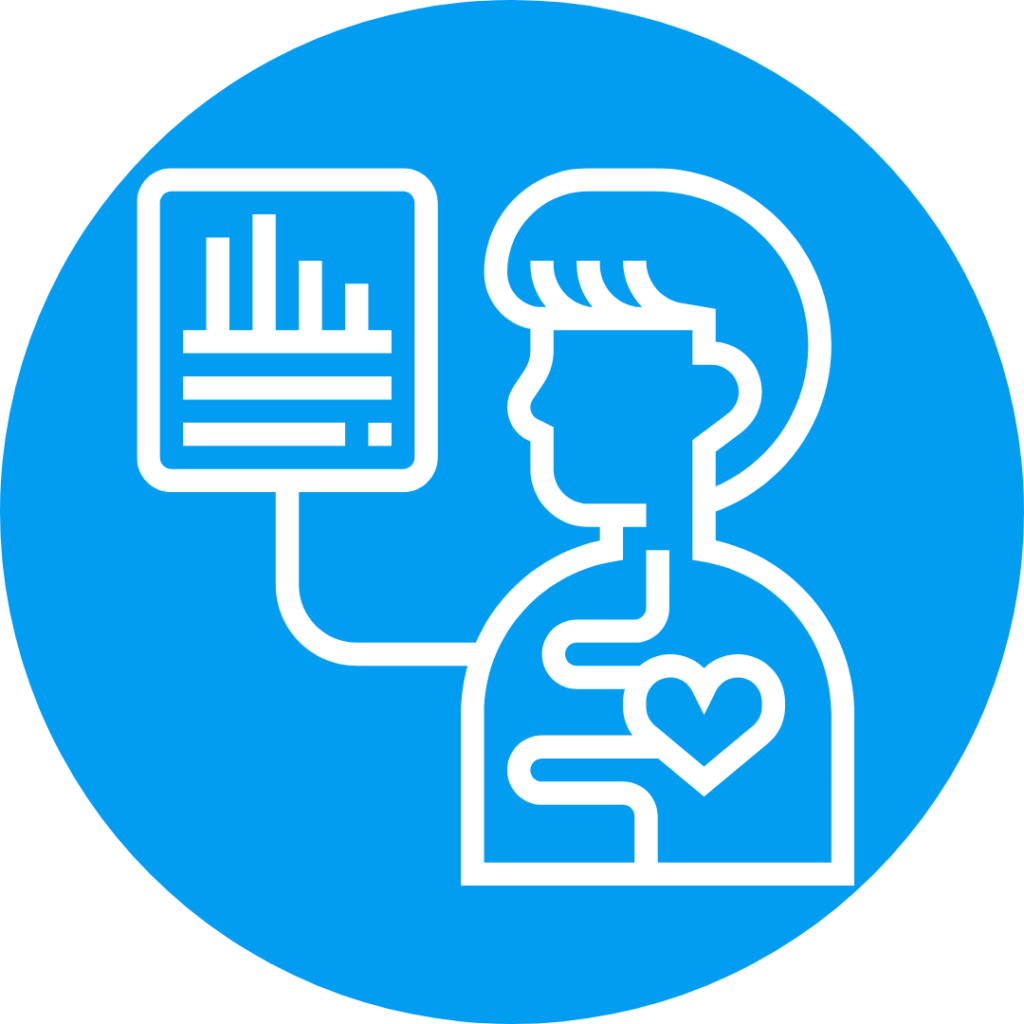
How we assess shows what we value. Our materials expect students not to learn simple coding skills but complex transversal skills as well. How to assess the important 21st century skills such as teamwork skills or critical thinking?
This is why the curriculum is equipped with a framework that emphasised diverse assessment practices such as peer- and self-assessment. The assessment framework allows teacher to make learning objectives clear and transparent to students. Students get to participate in how they are evaluated, which in turn increases their motivation and commitment.
Learning goals
Students learn 21st century skills by implementing practical projects that each focus on a topic that is interesting and understandable to the students. Students learn subject skills such as code syntax, automation and artificial intelligence theory and then practice the newly acquired skills by working in projects. Project-based approach promotes transversal skills as part of everyday learning. The projects have been designed to match the students’ age and stage of development.
Levels of education
Modular structure ensures a good fit with both basic education schools as well as extra-curricular education institutes such as after-school clubs or camps.
Preschool
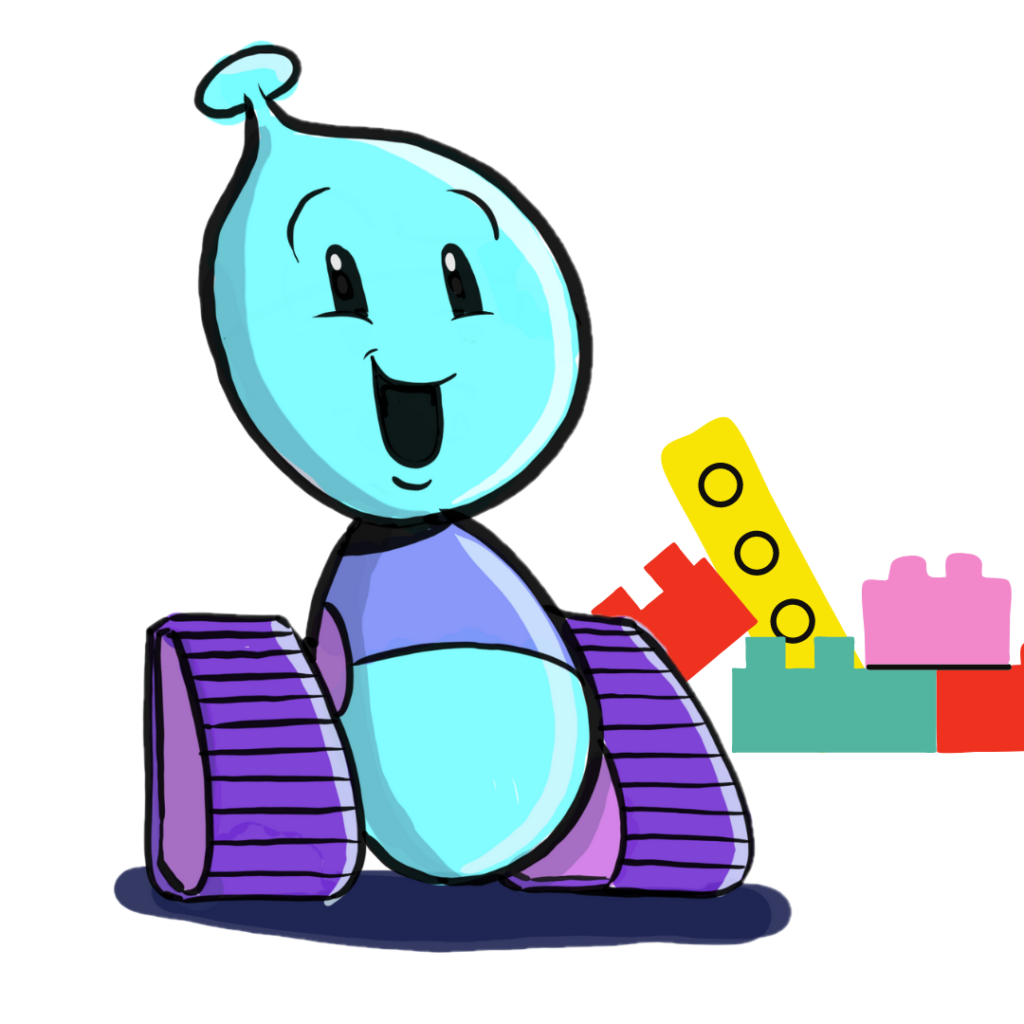
Goals
Prepare the mindset
Step-by-step instructions
Basic elements in code
Computational thinking concepts
Work routines for programming
Approach
Physical play and games to practice key concepts
Use tablets and visual programming
Produce interactive stories
Primary
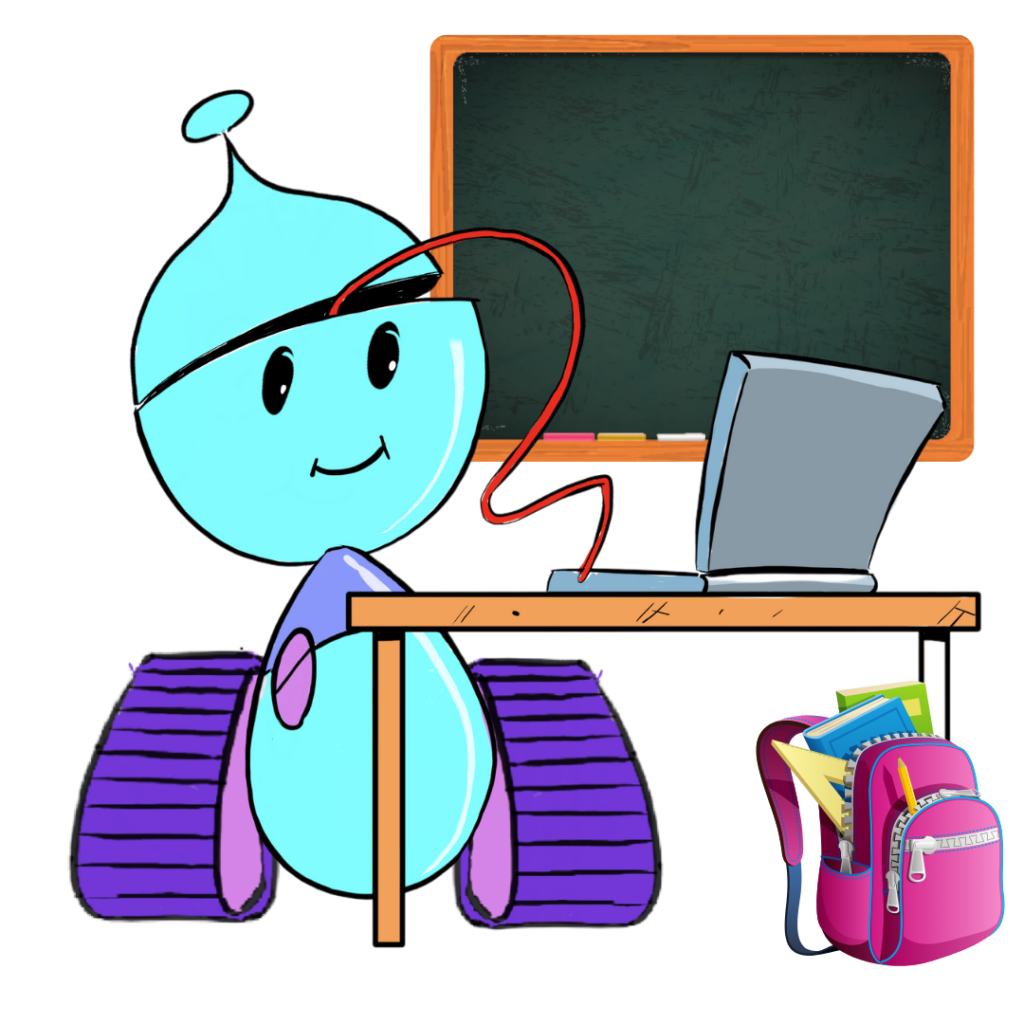
Goals
Key concepts such as loops, variables and conditional statements
Project and interface design
Good coding practices
Basics of automation and artificial intelligence
Approach
Real world phenomenons
Discovery through experimentation
Visual programming with computers
Themes relevant for students
Secondary
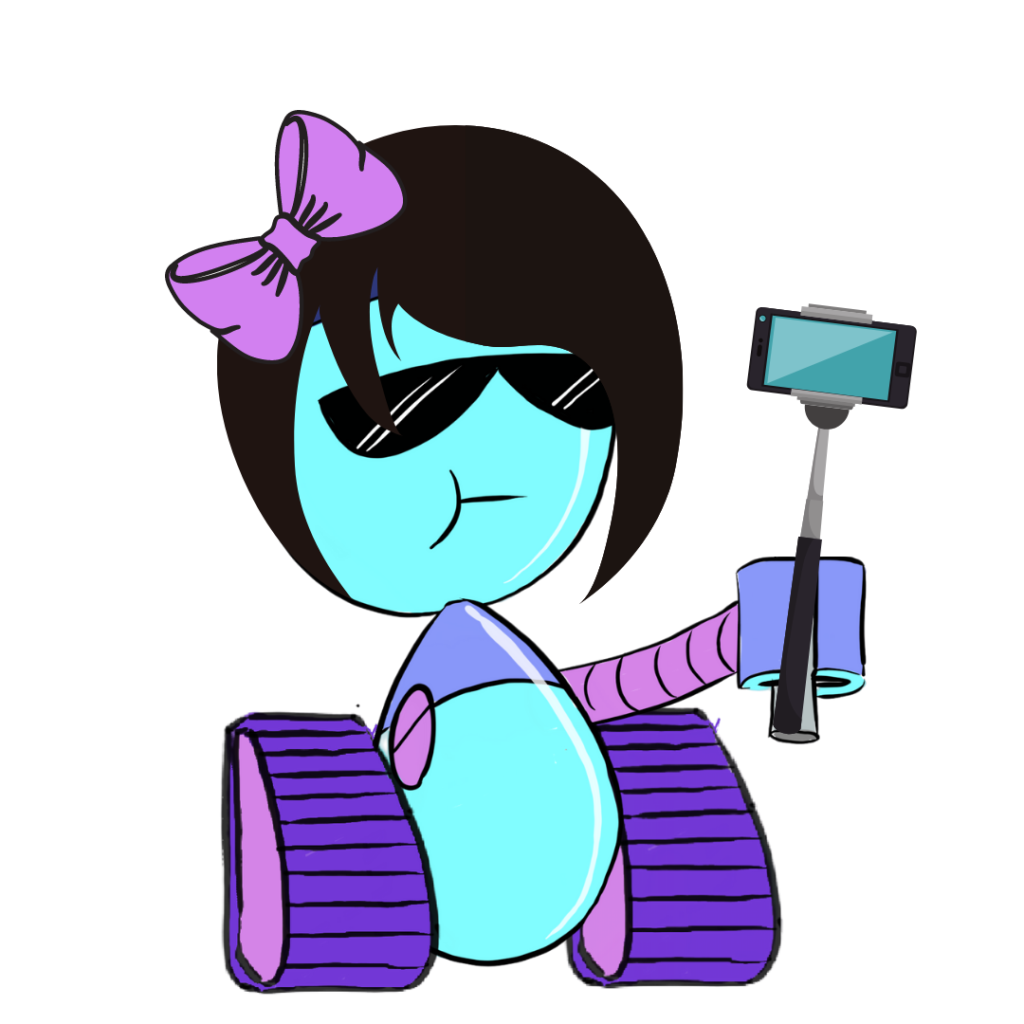
Goals
Textual programming
Presentation and manipulation of data
Using coding as part of subject studies
Fluent work routines Creative problem solving routines
Approach
Work-life simulations
Promoting entrepreneurship
Moving from visual to textual programming
Solve real-life problems
Leave your details and we will contact you to see how you can benefit from Code School Finland.
Meanwhile, consider participating on 21st Century Coding Pedagogy online course, that gives out a digital badge and involves portfolio work.